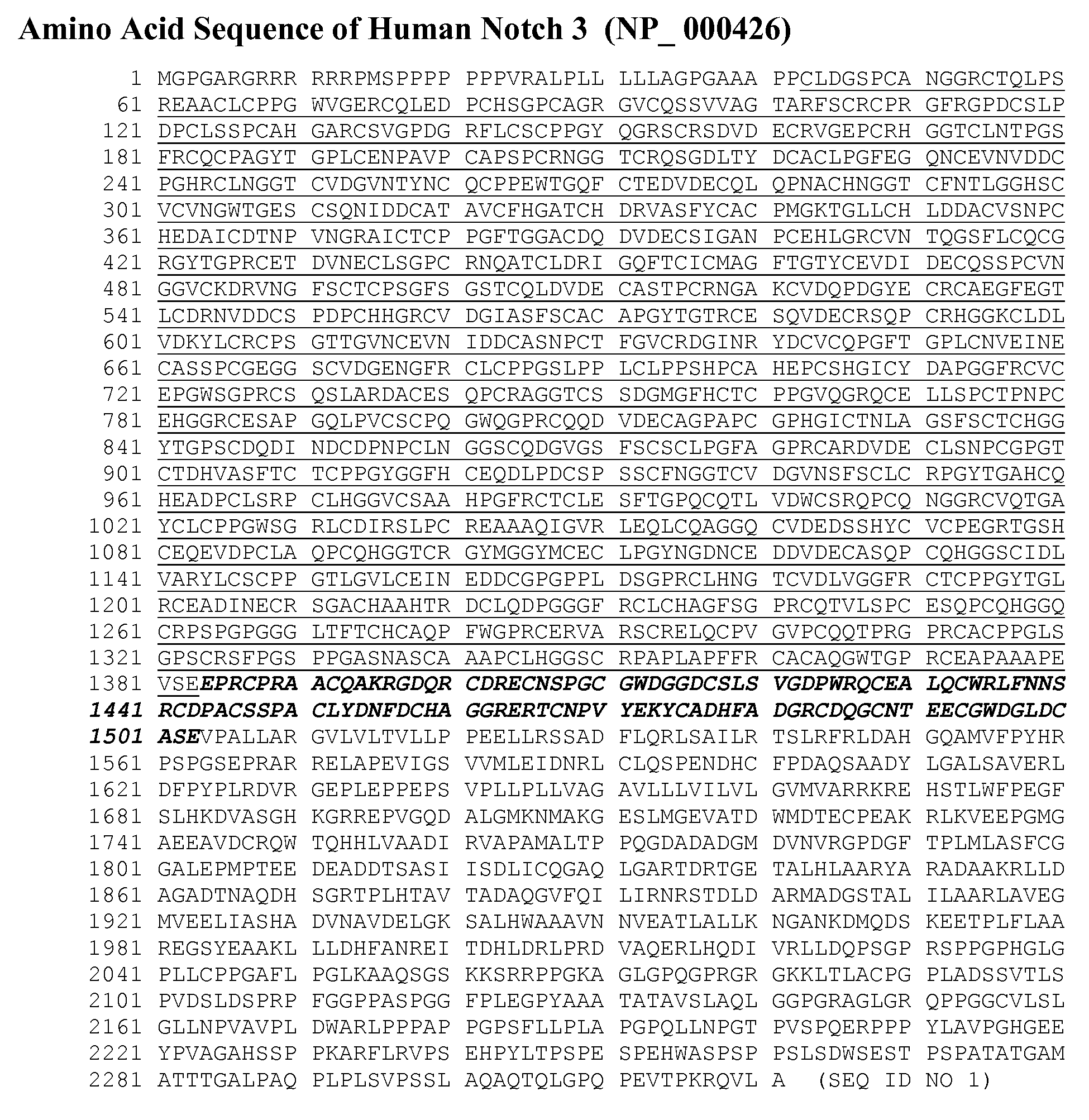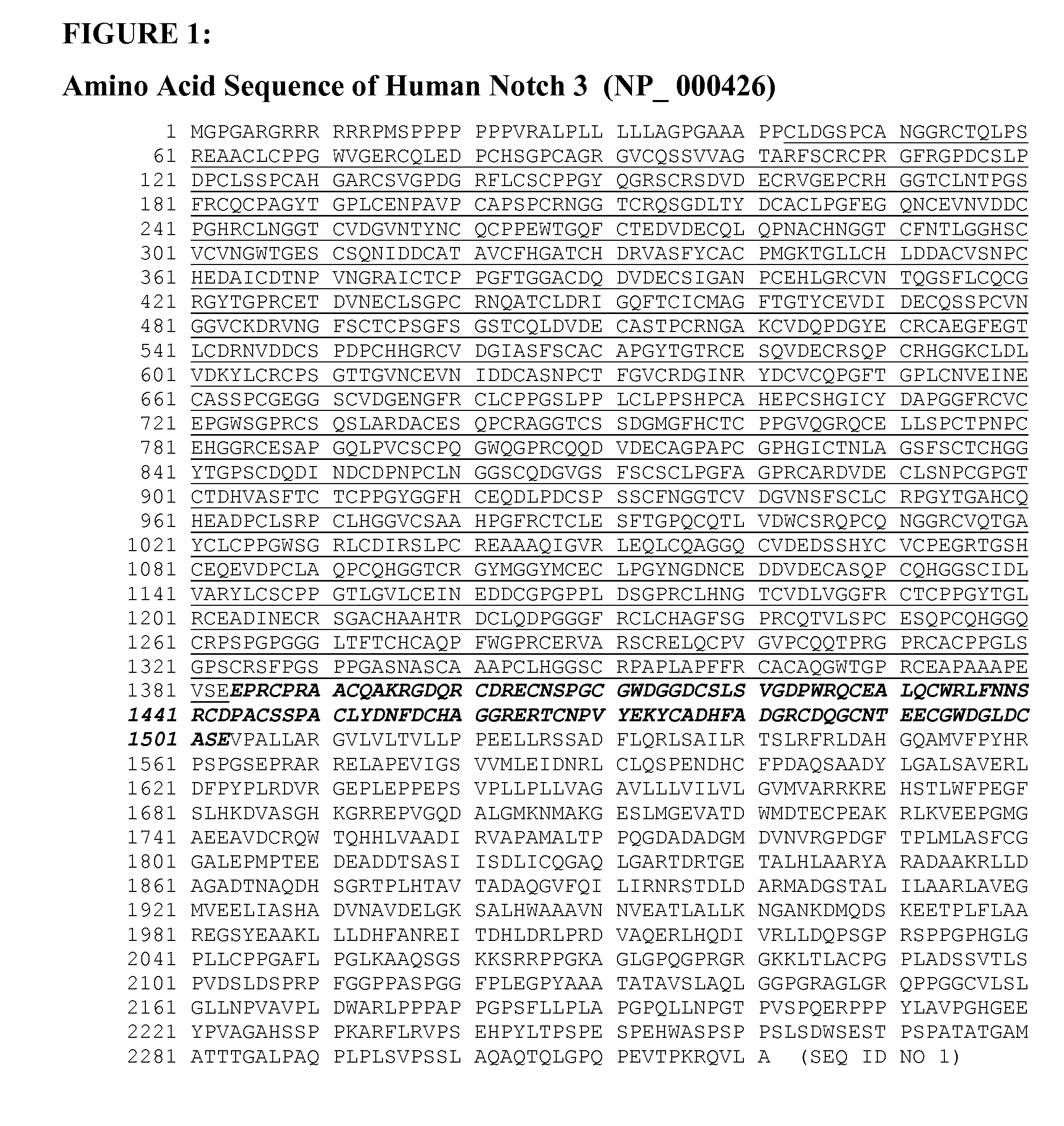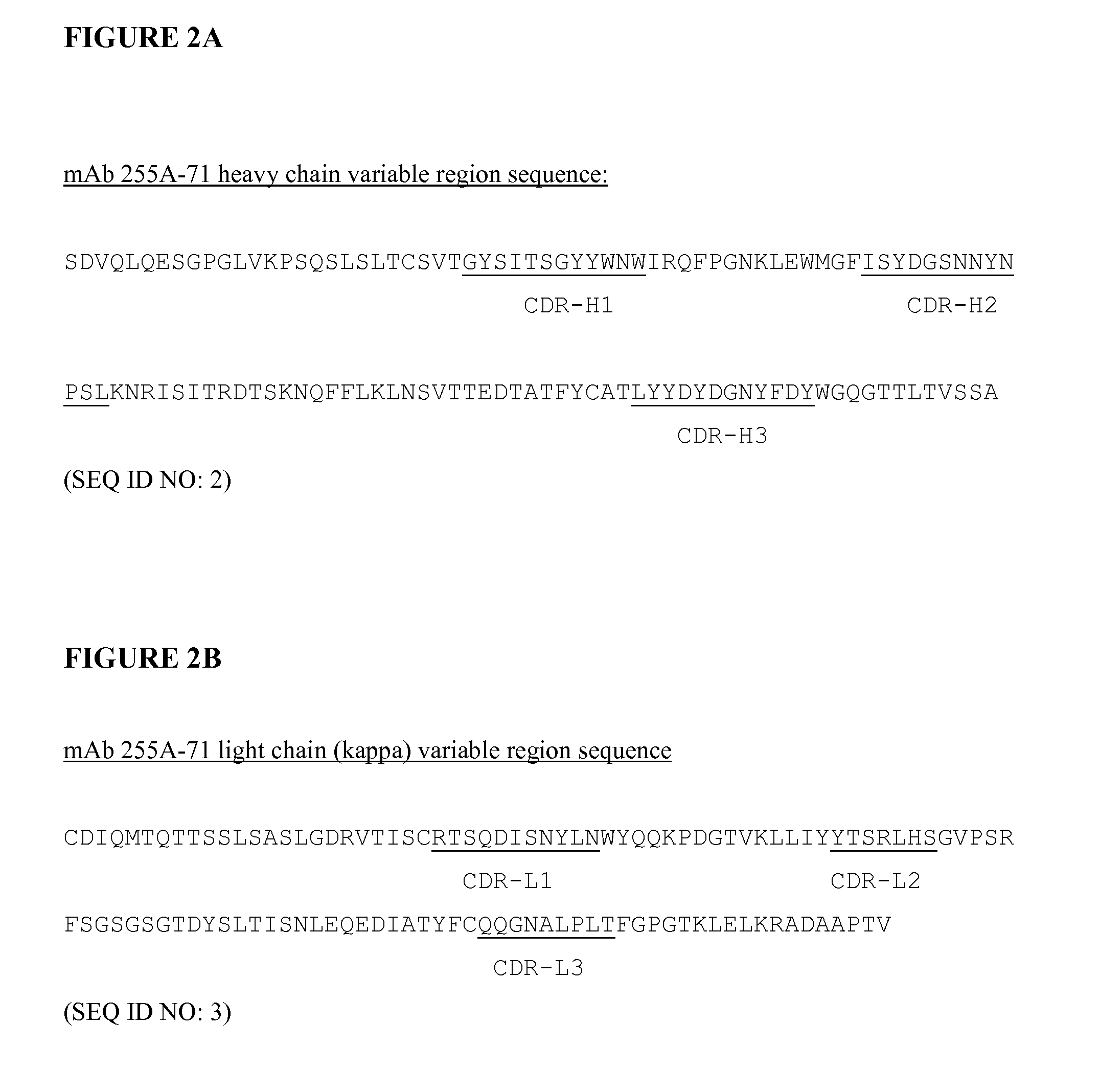Novel Anti-notch3 antibodies and their use in the detection and diagnosis of disease
a technology of anti-notch 3 antibodies and disease, which is applied in the direction of peptides, drug compositions, metabolic disorders, etc., can solve the problems of poor prognosis of stage epithelial ovarian cancer, long-term survival in less than 30 years, and largely undiagnosed diseas
- Summary
- Abstract
- Description
- Claims
- Application Information
AI Technical Summary
Benefits of technology
Problems solved by technology
Method used
Image
Examples
example 1
Generation of Immunogen: Notch3 Extracellular Domain-FC Fusion Protein
[0108]Notch3 protein sequence was analyzed using an internet-based research software and service (Motif Search, http: / / motif.genome.jp / ). The extracellular moiety of Notch3 consists of 34 epithelial growth factor (EGF) repeats, three LIN12 signature motifs, and a heterodimerization domain. The cDNAs coding for the EGF repeat region (amino acid 43-1377) and LIN12 / dimerization (LD) domain (amino acid 1378-1640) of Notch3 were synthesized by PCR amplification from human liver and pancreatic RNAs (Ambion, Inc. Austin, Tex.), respectively, followed by a first strand cDNA synthesis using Invitrogen's Superscriptase III cDNA synthesis kit and protocol (Invitrogen, Carlsbad, Calif.). The PCR-synthesized Notch3-EGF repeat DNA fragment (˜4 kb) and Notch3-LD DNA fragment (˜0.8 kb) were cloned into Tanox's internally generated expression vectors, His-γ1Fc / pSec and His-γ1Fc / pCD3.1, which resulted two sets of expression plasmid...
example 2
Generation of Anti-Notch3 MABS
[0112]Male A / J mice (Harlan, Houston, Tex.), 8-12 week old, were injected subcutaneously with 25 μg of Notch3-EGF / Fc or Notch3-LD / Fc in complete Freund's adjuvant (Difco Laboratories, Detroit, Mich.) in 200 μl of PBS. At two-week intervals, the mice were twice injected subcutaneously with 25 μg of Notch3-EGF / Fc or Notch3-LD / Fc in incomplete Freund's adjuvant, respectively. Two weeks after the injections and three days prior to sacrifice, the mice were again injected intraperitoneally with 25 μg of the same antigen in PBS. For each fusion, single cell suspensions were prepared from spleen of an immunized mouse and used for fusion with Sp2 / 0 myeloma cells; 5×108 of Sp2 / 0 and 5×108 of spleen cells were fused in a medium containing 50% polyethylene glycol (M.W. 1450) (Kodak, Rochester, N.Y.) and 5% dimethylsulfoxide (Sigma, St. Louis, Mo.). The cells were then adjusted to a concentration of 1.5×108 spleen cells per 200 μl of the suspension in Iscove medium ...
example 3
Cell-Based Binding Assays for Anti-Notch3 MABS
[0115]The cell-based binding assays used to characterize the anti-Notch 3 mAbs required cloning a full-length of human Notch3 open reading frame into a vector, in this case pcDNA3.1 / Hygro (Invitrogen, Carlsbad, Calif.). The Notch3-coding region was synthesized by RT-PCR using human liver tumor RNA (Ambion, Inc., Austin, Tex.) as a template. The final plasmid construct, Notch3 / Hygro, expressed a full-length Notch3 protein as depicted in FIG. 1. A stable cell line expressing Notch3 was generated by transfecting the plasmid construct into 293T cells using a Lipofectamine 2000 kit following the same procedure as described in Example 1. Well-isolated single colonies were picked up and grown in separate wells until enough clonal cells were amplified. Stable 293T clones that were resistant to hygromycin and expressed high levels of Notch3 protein were identified by Western blot analysis and by fluorescent electromicroscopy using polyclonal anti...
PUM
| Property | Measurement | Unit |
|---|---|---|
| pH | aaaaa | aaaaa |
| time interval | aaaaa | aaaaa |
| time interval | aaaaa | aaaaa |
Abstract
Description
Claims
Application Information
 Login to View More
Login to View More - R&D
- Intellectual Property
- Life Sciences
- Materials
- Tech Scout
- Unparalleled Data Quality
- Higher Quality Content
- 60% Fewer Hallucinations
Browse by: Latest US Patents, China's latest patents, Technical Efficacy Thesaurus, Application Domain, Technology Topic, Popular Technical Reports.
© 2025 PatSnap. All rights reserved.Legal|Privacy policy|Modern Slavery Act Transparency Statement|Sitemap|About US| Contact US: help@patsnap.com



